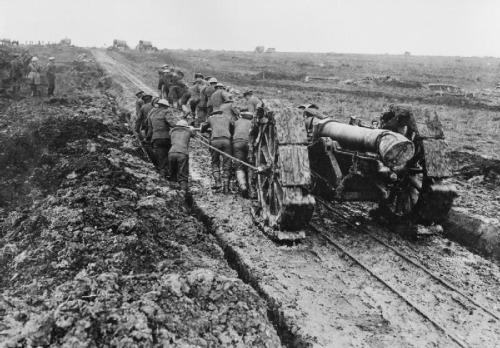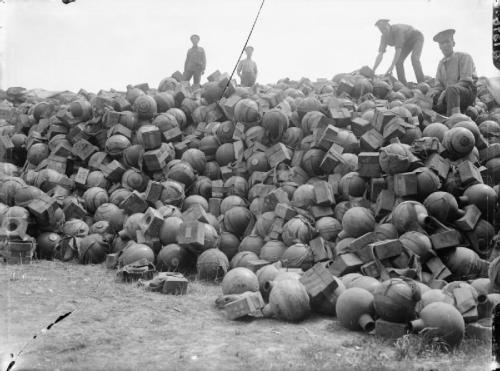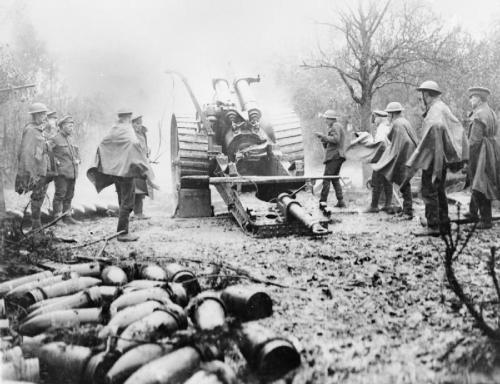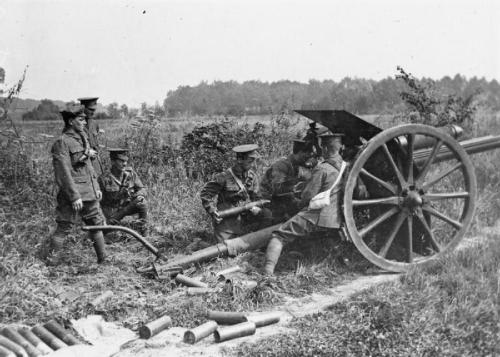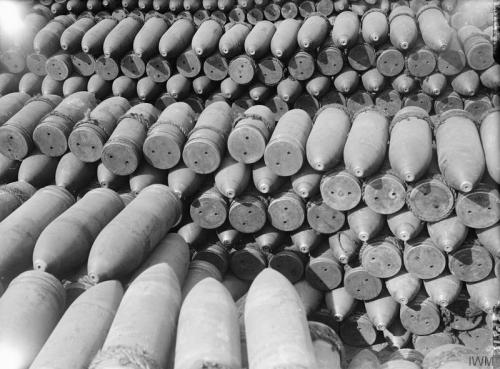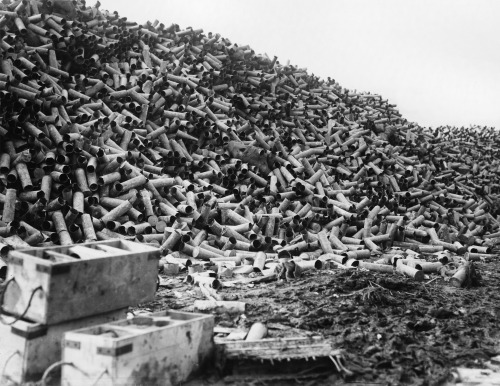historicalfirearms: Somme Bombardment Begins On the 24th June 1916, the British Army began its large
historicalfirearms:Somme Bombardment BeginsOn the 24th June 1916, the British Army began its largest bombardment of the Great War so far. The assault in the Somme sector was to be preceded by four days of heavy shelling before the first infantry would advance. A 25,000 yard stretch of German lines was targeted by over 1,000 pieces of artillery of all different shapes and sizes. From trench mortars to 60-pounders to huge 15-inch howitzers. General Sir Henry Rawlinson commanding the Fourth Army claimed “nothing could exist at the conclusion of the bombardment in the area covered by it.”The largest previous British bombardment took place before the Battle of Loos when 484 (predominantly smaller) guns had shelled German positions. The bombardment at the Somme, however, was to be much heavier and continue for much longer despite being over a larger front. During the course of the preliminary bombardment batteries were allocated up to 3,000 rounds a day with some 1.5 million shells eventually fired. Despite the large number of shells fired the majority were shrapnel shells, not high explosive, better suited to anti-personnel roles than cutting the thick German wire or destroying dugouts and trenches. This problem was compounded by faulty ammunition which failed to explode. Unlike at Loos the previous year the German forces along the Somme were defending in depth with the artillery fire having to split itself between the German first and second lines. Private Frank Lindley of the Barnsley Pals Battalions of the York and Lancaster Regiment recalled: “Their wire was about four times as wide as ours. The quantity of wire they had you couldn’t have got through that in a month of sundays. Our wire was narrow compared to theirs. When they were saying; “our guns will tear up the wire so that you can get through.” I thought “by god I hope so”, but no. We knew all the time we were in for a bashing and we couldn’t do anything about it.”The Royal Flying Corps had been ordered to carry out reconnaissance sorties to photograph the impact of the artillery on the enemy wire and positions, however, heavy rain had prevented this. The allies decided that in light of uncertainty two extra days of artillery fire were needed and the infantry attack as postponed until the 1st July. The effects of the British bombardment varied massively with some sectors reporting the cutting of gaps in the wire while other sectors saw little impact. The bombardment continued day and night for another five days before the battle began and the first men went over the top.Sources:Images: 1 2 3 4 5 6 7 8 9If you enjoy the content please consider supporting Historical Firearms through Patreon! -- source link
Tumblr Blog : www.historicalfirearms.info
#wwi

